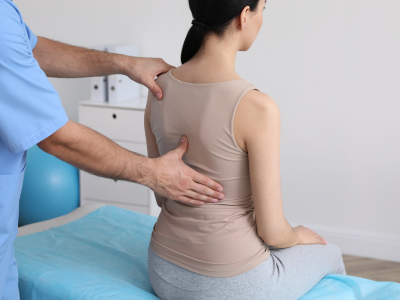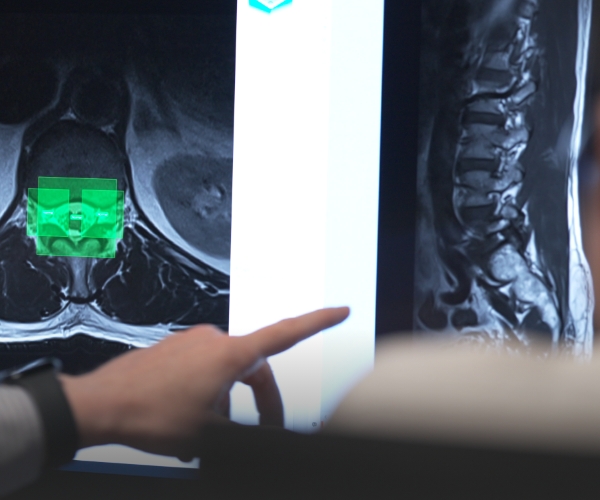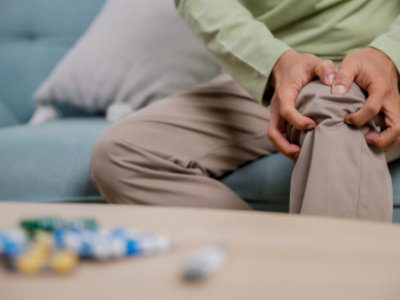Published on 18 June 2024
The prevalence of osteoporosis, a condition which weakens bones, is expected to rise in Singapore due to an ageing population and an increasingly sedentary lifestyle.
Imagine breaking or fracturing your bones simply by sneezing, coughing, or bending over.
That is the sobering reality of the dangers faced every day by those suffering from severe osteoporosis.
Indeed, the significant impact of the disease in the Asia-Pacific region was underscored by Singapore’s Minister of Health, Mr Ong Ye Kung, in a 2022 speech, where he highlighted that the expected rise in osteoporosis prevalence would lead to an 'exponential increase in fragility fractures’.
But what causes osteoporosis? What are its symptoms, and how can it be managed and treated?
What is osteoporosis?
Osteoporosis is a condition that causes bones – which are living tissue constantly undergoing a process of breaking down and rebuilding – to become weak and fragile. It occurs when the body fails to create new bone at a rate that keeps up with the loss of old bone.
Dr Lin Shuxun, Consultant at the Division of Spine Surgery, Department of Orthopaedic Surgery, Alexandra Hospital (AH), highlighted the importance of calcium for bone health during the first National University Spinal Institute (NUSI) Public Spine Symposium held on March 30 at the National University Health System (NUHS).
He explained, “There isn’t enough calcium in the body to provide adequate support, resulting in thinning of the connective tissue, which makes bones brittle and prone to breaking.”
He further emphasised that while bone density naturally decreases with age, certain groups of people are at a higher risk of developing osteoporosis.
These include post-menopausal women, due to plummeting oestrogen levels, individuals with a family history of osteoporosis, as well as those with kidney, liver, and thyroid problems.
While osteoporosis is commonly associated with the elderly, Dr Lin clarified that bone loss typically begins as early as a person's 30s.
“Bone density is built up during childhood and youth, particularly during growth spurts. However, it starts decreasing once you reach your 30s,” Dr Lin explained.
Identifying osteoporosis
Some signs of osteoporosis include a rounding of the spine, gradual loss of height over time, and possibly back pain, which may result from a spine fracture.
However, the most reliable way to identify osteoporosis is through a bone mineral densitometry (BMD) test.
BMD scans, which measure an individual’s bone mass density, are most commonly conducted in the left hip and lumbar spine, as these are the areas most prone to fractures.
By measuring bone mass and density, a doctor or radiologist can assess a patient's risk of fracture, as well as evaluate their response to osteoporosis treatment.
Dr Lin recommends those above the age of 65 to go for regular BMD scans, particularly if they have risk factors for fractures.
Risk factors include excessive alcohol consumption, sedentary lifestyles, poor dietary choices, as well as those with certain medical problems such as kidney or liver disease and cancer.
Preventing and treating osteoporosis
Dr Lin outlined a three-pronged approach to effectively treating and managing osteoporosis: dietary adjustments, lifestyle changes, and medication.
When it comes to a person’s diet, Dr Lin recommends ensuring a sufficient daily intake of calcium to maintain healthy and strong bones.
He elaborated, “Calcium is key to maintaining optimal bone density. Seniors should aim to consume about 1000 mg of calcium daily. Food options that are rich in calcium include dairy and soy products, as well as leafy green vegetables.”
To improve the body’s ability to absorb calcium, Dr Lin advises consuming 600 mg to 800 mg of vitamin D daily.
“The easiest way to generate vitamin D is to spend a few minutes under the sun every day,” Dr Lin said. “If that’s not possible, you can also take supplements. It's important to increase vitamin D intake as you age, as older individuals require more to absorb higher amounts of calcium.”
Adopting a healthier lifestyle can also slow down bone loss, and promote the building of strong bones – Dr Lin recommends exercising at least two to three times a week, as well as reducing smoking and alcohol consumption.
Lastly, individuals suffering from osteoporosis will likely be prescribed medication for their condition, the most common of which are bisphosphonates.
Bisphosphonates are a group of medications that slow down the rate at which bone cells break down. They help to maintain or increase bone density and reduce the risk of fractures.
Ultimately, while osteoporosis can significantly affect an individual's quality of life and, in severe cases, even lead to death, it is a preventable and treatable condition that can be effectively managed, particularly when detected early.
To make an appointment for a BMD scan with NUHS Diagnostics, please click here.
In consultation with Dr Lin Shuxun, Consultant, Division of Spine Surgery, Department of Orthopaedic Surgery, NTFGH, AH




